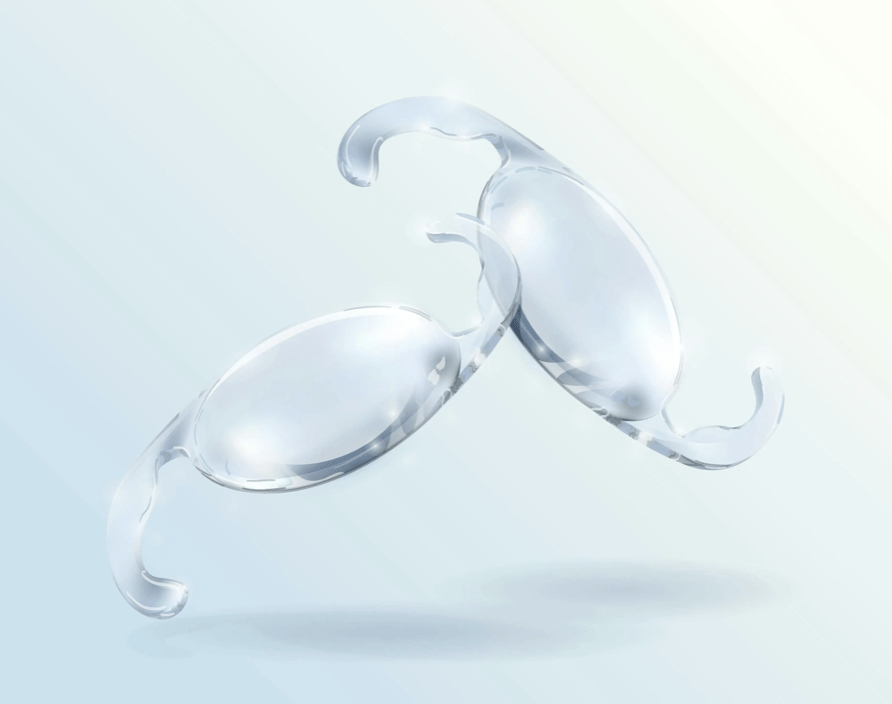Cataract surgery is one of the most common and successful eye procedures worldwide. During the surgery, the eye’s clouded natural lens is replaced with an artificial lens known as an intraocular lens (IOL). The choice of IOL plays a crucial role in the quality of vision after surgery. With advancements in technology, there are multiple types of IOLs available to cater to different vision needs. In this blog, we’ll explore the different types of IOLs and their benefits.
1. Monofocal IOLs
Best for: Distance vision correction
Monofocal IOLs are the most commonly used lenses in cataract surgery. These lenses are set for a single focal distance, typically for distance vision, meaning patients may still need reading glasses for close-up tasks.
Pros:
- Provides excellent clarity for a single distance
- Often covered by insurance or Medicare
- High success rate
Cons:
- Does not correct presbyopia (age-related near vision loss)
- Requires glasses for near or intermediate vision
2. Multifocal IOLs
Best for: Both near and distance vision
Multifocal IOLs contain multiple focal points, allowing patients to see clearly at different distances. This reduces or eliminates the need for glasses after surgery.
Pros:
- Provides vision at multiple distances
- Reduces dependence on glasses
Cons:
- Some patients experience halos and glare, especially at night
- May take time for the brain to adjust
3. Extended Depth of Focus (EDOF) IOLs
Best for: Continuous range of vision
EDOF IOLs are designed to provide an extended range of vision, particularly improving intermediate vision (such as computer work) while still offering good distance and near vision.
Pros:
- Better intermediate vision than monofocal lenses
- Fewer visual disturbances compared to multifocal lenses
Cons:
- Some patients may still require reading glasses for very fine print
- More expensive than monofocal lenses
4. Toric IOLs
Best for: Patients with astigmatism
Toric IOLs are specifically designed to correct astigmatism, a condition where the cornea has an irregular shape, causing blurred vision.
Pros:
- Corrects astigmatism along with cataracts
- Reduces the need for glasses or contact lenses
Cons:
- More expensive than standard IOLs
- Does not provide multifocal benefits (some patients may still need reading glasses)
5. Light Adjustable Lenses (LALs)
Best for: Customisable vision post-surgery
LALs allow patients to adjust their lens power after surgery using a specialized light treatment, ensuring optimal vision correction.
Pros:
- Post-surgery adjustments allow for personalised vision correction
- Reduces risk of over- or under-correction
Cons:
- Requires multiple follow-up visits for adjustments
Not yet widely available
Choosing the Right IOL for You
The best IOL for you depends on factors such as:
- Your daily activities (e.g., reading, driving, or using digital devices)
- Your existing vision problems (e.g., astigmatism, presbyopia)
- Your preference for glasses-free vision
- Your budget and insurance coverage
Final Thoughts
Cataract surgery is a life-changing procedure, and selecting the right IOL can significantly impact your post-surgery vision. Consulting with an eye specialist will help determine the best IOL based on your individual needs and lifestyle.
If you’re considering cataract surgery, schedule a consultation with your ophthalmologist to discuss which IOL option is best for you!
Book Your Cataract Consultation Today!
At Solasta Healthcare we offer expert private cataract consultations. Take the first step toward clearer vision and a better quality of life!
Call us: 028 40 648 486
Email: info@solastahealthcare.com
Visit: Solasta Healthcare

